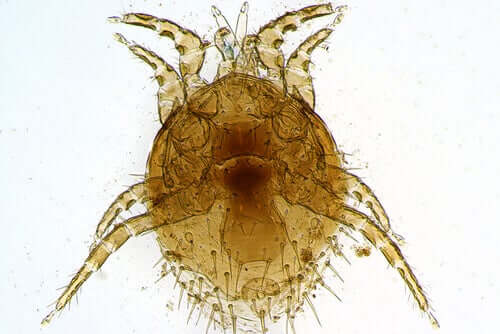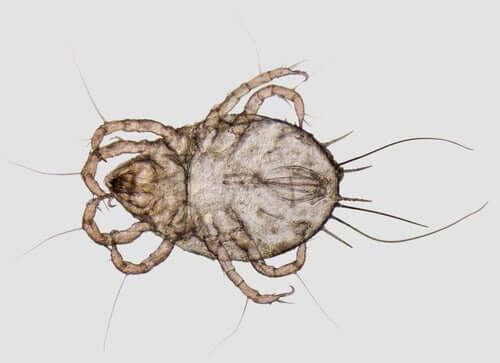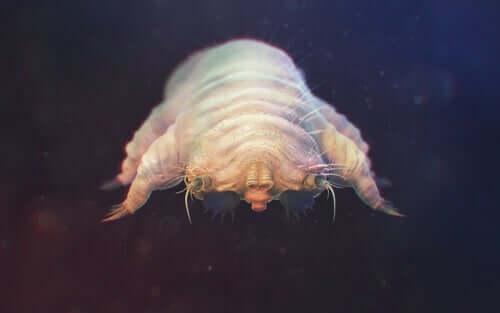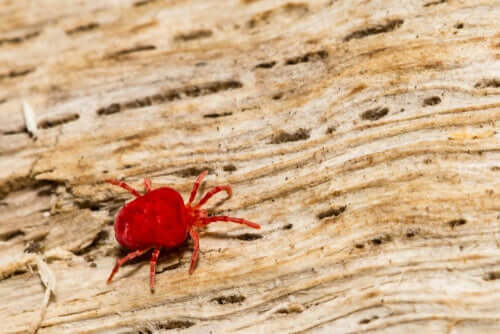All You Need to Know About Species of Mite

People often associate mites with fleas for several reasons. Firstly, they are small, and sometimes even microscopic size. Secondly, they live in groups and can infest our homes and our pets. As this article will explain, many species of mite don’t bite or cause any harm to humans. Keep reading to find out all you need to know about these little creatures.
What are mites?
Contrary to popular belief, mites are arthropods, not insects. They are also known as Acari. They are close cousins of ticks, spiders, scorpions, and other arachnids. These small bugs can be found almost anywhere on earth, including in rivers and oceans. They even live in extreme habitats, such as the Polar Regions, in deserts and at high altitudes.
It’s surprising that we have found mites wherever we’ve searched for them, even in deep crevices and thermal waters.
As you can imagine, the morphology of mites and their eating habits can vary greatly. This is due to their wide range of habitats.

Classification of species of mite
The question of how to classify mites is quite difficult and still remains partly unanswered. Mites are a subclass and fall under three main superorders:
- Acariformes are the most diverse group of mites.
- Opilioacariformes are the smallest group of mites.
- Parasitiformes are an order of parasitic mites. Animals such as birds, mammals, amphibians and reptiles are hosts to these parasites.
Most types of mites feed on insects, plants, or decomposing dead animals. For example, dust mites feed mainly on dead skin cells.
There are only a few species of parasitic mites, which live on birds and mammals. However, these can sometimes develop into plagues that infest homes.
Nature’s unwelcome gift
There are more than 48,000 species of mite. Around 65 species fall under the Demodex genus, only two of which afflict humans.
These two species of mite are D. folliculorum and D. brevis. Unfortunately, they’re nature’s unwelcome gift to us, as they live exclusively on humans.
Other Demodex mites have similar habits. For example, D. canis loves to live on dogs. However, an excess of D. canis mites can lead to a potentially fatal condition in dogs, called demodectic mange, or demodicosis.
Demodex mites can live on humans from any ethnic group, from Caucasian populations to indigenous groups. These include Eskimo populations. It’s therefore normal to find microbe mites on our skin. It’s thought that an excess of these microbes is linked to rosacea.

Mite reproduction
Mites in the Acari subclass reproduce via sexual reproduction between males and females. After they have mated, the female then lays fertilized eggs. Females can lay more than 300 eggs at a time. Their life cycle is very short, as Acari need only 15 to 20 days to become an adult and their adult life lasts only 25 days.

Risks associated with mites
From a veterinary-health perspective, Acari pose several significant risks in the following areas:
- They cause direct harm. Parasitic mites can cause a number of injuries when they attach themselves to skin and feed on blood or lymph. Their toxic saliva can also cause several illnesses. Mites have been linked to a number of skin conditions in humans, including mange, acne, rosacea and blepharitis (an inflammation of the eyelids).
- They are vectors of disease. Mites can contribute to the spread of disease, although this happens more rarely. The types of organism they can transmit include nematodes, protozoa (which cause piroplasmosis), treponema (which cause a recurring fever) and rickettsia (Q fever, tsutsugamushi or bush typhus, and Rocky Mountain spotted fever). Mites can also transmit bacteria (which cause tularemia, for example) and viruses (which can cause several types of encephalitis).
- They can cause allergies, which is particularly the case with dust mites. These mites can cause bronchial asthma, a condition caused by allergens present in dead skin or feces. These allergens can then provoke an allergic reaction.
Benefits of mites
- They are vital to soil nutrient cycle. Mites are very common in soils and play a vital role in decomposing vegetable matter. They also help to recycle soil substances.
- They can be used as bioindicators. As mites play a fundamental role in the soil cycle and have low mobility, they have served on several occasions as an indicator of soil health.
- They can be used for pest control. Acari can serve as a biological control for several harmful organisms as they feed on small insects and other mites. They can help control agricultural pests and are used commercially. Mites that prey on insects can serve as a natural method of controlling insect populations.
All cited sources were thoroughly reviewed by our team to ensure their quality, reliability, currency, and validity. The bibliography of this article was considered reliable and of academic or scientific accuracy.
- Patiño, L. A., & Morales, C. A. (2013). Microbiota de la piel: el ecosistema cutáneo. Revista de la Asociación Colombiana de Dermatología y Cirugía Dermatológica, 21(2), 147-158.
- Evans, G. O. (1992). Principles of acarology. Wallingford, Oxon, UK: CAB International.
- Díaz, R. M. D., Vidaurrázaga, C., & de Arcaya, D. (2003). Historia del ácaro de la sarna. Piel, 18(9), 471-473.
